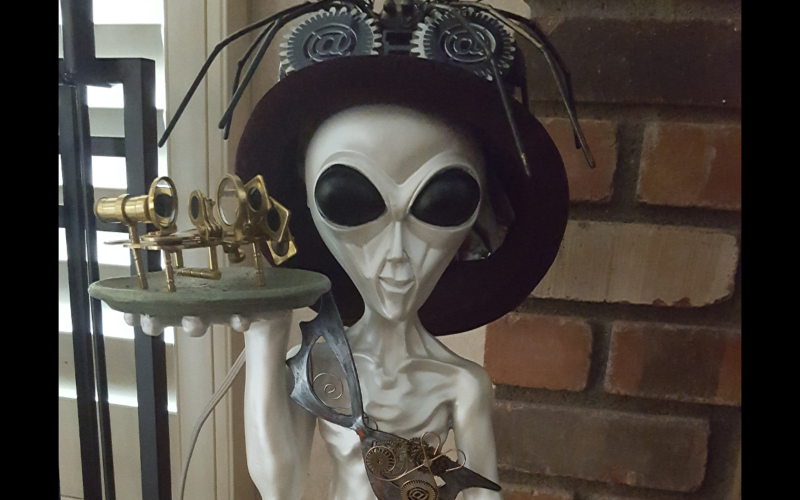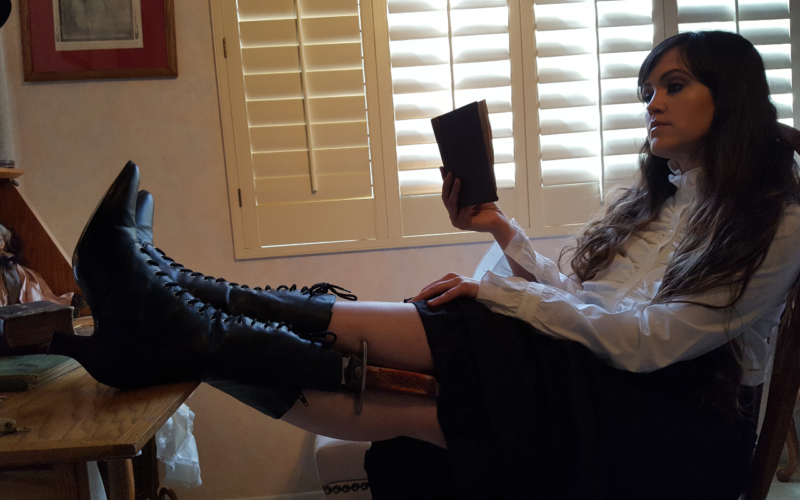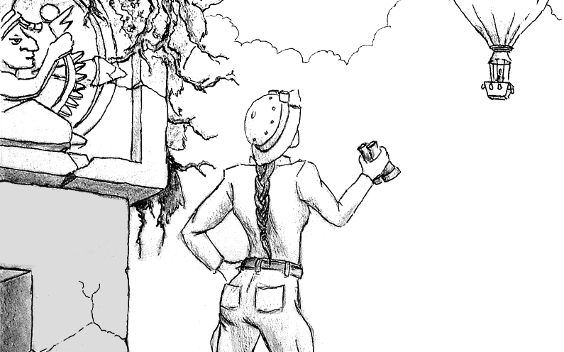
Having focused on steampunk for the last few years, I was astonished that I hadn’t run into this book before. Homunculus was published in 1986 before steampunk became all the rage in the 2000’s. It won the Phillip K. Dick award for best original paperback in 1988. Many steampunk books are modern-style novels that happen to take place in Victorian London. Homunculus, however, is a droll comedy in the Victorian tradition. Its language, tone, and characters are all wonderfully British, despite the fact that Blaylock is an American.
The focus of Homunculus is that staple of British fiction, the gentleman’s club, and I don’t mean the modern euphemism for a girly bar. It’s the Trismegistus club, a place where educated fellows gather to smoke pipes, quaff pints of ale, and discuss natural philosophy. One of the many mysteries they investigate is the legendary Homunculus. He’s a tiny man in a box who is supposedly immortal and in possession of profoundly magical powers.
The heart of the book’s humor is its long-winded bombastic prose that evokes the flamboyant style of the era. The sheer prevalence of passive voice would make a modern writing coach’s head explode. The book opens with the passage of a ghostly airship over London. Its skeletal pilot remains at the wheel as it flies aimlessly over land and sea. Rumors say the legendary may be aboard. The vessel’s current condition and destination are a great mystery.
The club members, who meet at Captain Powers’ tobacco shop, are an eccentric bunch. They include Langdon St. Ives, an amateur scientist who is building a spaceship on his country estate, and inventor William Keeble, who builds ornate wooden boxes and elaborate toys that may hold the secret of perpetual motion.
The book has its share of nefarious villains, including hunchback mad scientist Ignacio Narbondo and Shiloh, the self-proclaimed New Messiah. Narbondo uses alchemy to re-animate the dead, who become mindless zombies to fill the ranks of Shiloh’s cult. Years earlier, Narbondo’s conspiracy had ensnared a Trismegistus member, Sebastian Owlesby, driving him to madness and death. When they discover Owlesby’s notes, the club members resolve to act against this evil.
In the meantime, all sorts of bizarre events occur. Narbondo’s evil henchman kidnaps Keeble’s daughter Dorothy. Drake tries to steal the perpetual motion machine. A mysterious man wearing a “chimney pipe hat” breaks into St. Ives’ home, looking for a wooden box said to contain the Homunculus.
It’s impossible to list all the Monty-Python-esque incidents that make it all so funny. In one scene, Narbondo’s alchemical potions accidentally re-animate the remains of their poultry dinner, which gets up and tries to fly away. In another, an intruder launches St. Ives’ spaceship by accident, destroying years of work and wrecking the neighbor’s barn. Occasionally the humorous asides go on a bit too long, particularly the ramblings of the drunkard Bill Kraken. But in general, the arcane details fit together in a well-crafted whole, like one of Keeble’s amazing boxes.
I bought the audio version of this book. Nigel Carrington’s narration enhances the book’s baroque phrasing. He’s able to distinguish the many characters with different speech patterns without over-acting. I laughed out loud many times as I listened to it.
Homunculus may not be everyone’s cup of tea, but I found it engaging and fascinating. It’s the epitome of steampunk comedy. I give it five gears out of five.



































